Enab Baladi’s Investigation Team
Um Mohammed refuses to confirm the death of her detained husband and stresses that he is still alive, relying on her intuition as well as the experience inherited among the Syrians, which raises doubts about any account the regime circulates about the detainees.
“One of the people who visited the Civil Registry Department in the town of al-Sakilibiya told me that I had to come to claim my husband’s death,” said Um Mohammed, who refused to give her full name for security reasons. She told Enab Baladi: “They want me not to ask about him and not to demand his release.”
Abu Mohammed, a resident of the town of al-Sakilibiya in Hama countryside, was arrested in early 2013 at the Air Force Intelligence branch in Mezzeh, Damascus, leaving behind a wife and six children, half of them are minors.
Since then, his wife’s life has turned into a constant struggle to support her children. The journey of displacement has increased her distress and trapped her in one of the Turkish camps, waiting for the “relief”, which she has always associated with “her husband’s safe return”.
She did not go to get her husband’s death certificate, not only because she “denied” the news, but also for security reasons, as she fears to be arrested being a resident of Turkey and a detainee’s wife.
Um Mohammed told Enab Baladi: “The regime does not need my review, since the death news was registered at the Civil Registry Department, which is confirmed by many of the people who received similar communications.”
Fast and simultaneous movements of allegations of detainees’ death
Recently, Enab Baladi has noticed a growing number of cases of detainees’ families, in a number of areas, being informed of the death of their children in the prisons of the Syrian regime. The regime reports the news of the detainees’ death through the Civil Registry Department after it used to simply hand over their personal belongings to their families with a short notice stating that the detainee had died because of ill health.
The Head of the local council in Qabr Fidda in Hama countryside, Abdel Mouin El Masry, told Enab Baladi that “the regime has recently been informing the detainees’ families about the death of their children through the Civil Registry. This was meant to show that the death occurred normally and that it is already registered at the Civil Registry, refute what the opposition is promoting about the absent deaths, and blur the crime and remove traces of evidence by natural death.”
The death case is registered in the Civil Registry Department as occurring in 2015, and parents are asked not to talk about this death to anyone.
The city of Ma’damiyeh al-Sham in Damascus countryside has also witnessed in recent weeks cases of death allegations of a number of detainees when the Civil Registry Department in the city of Ma’damiyeh issued the names of 165 detainees of the city’s citizens who were killed under torture in the branches of security affiliated with the regime during the past years.
The same thing happened in several Syrian regions, such as Darayya, Zabadani and Lattakia in conjunction with this incident, which raised questions about the reason for this move at the moment and its political dimensions, amid fears of the regime’s tendency to blur the detainees’ file.
From numbers to official lists
Marwan al-Ish, secretary of the Syrian Committee for Detainees, said in an interview with Enab Baladi: “On 4 July, we received information that lists were handed over in Damascus and its countryside since last week. A leaked list, which was not published, included the name of the martyr Palestinian Syrian engineer Bassel Khartabil Safadi, who has been said to die of a heart attack.”
Al-Ish explained how the regime is trying to circumvent the accountability system by sending lists of detainees to Civil Registry Department to officiate their death allegations there, while the cause of death is always “natural”.
He added, “Bassel was my fellow detainee, who was referred to the Military Field Court, but he was placed in Adra prison and was removed from prison and taken to an unknown place. Then, it was found that he was executed in Sednaya prison.”
As for the most prominent areas to which the included names belonged, al-Ish explained: “We received successive news that there were death certificates sent from the Ministry of the Interior to the Civil Registry Department and then to the Civil Registry chapters in the regions, districts and cities. There were three main lists, one from Darayya and the other from al-Ma’damiyeh and part of Hama’s list, while we have reached a part of Zabadani’s list through personal efforts and follow-up from several parties.”
The lists included two groups, a list of death certificates issued by the military hospitals (Tishreen, Military Hospital 601, Harasta Military Hospital and some other medical points). The cause of death in these lists was “death from contagious and infectious diseases,” although some of the victims were killed under torture. In addition to certificates, where it was written “on the basis of the decision of the First and Second Field Courts,” and these names were executed under the judgments of the Field Court.
The Ma’damiyeh list for example, included 20 executions while the rest of the detainees died under torture or due to communicable diseases.
Those who did not die under torture died of “herpes”
Despite the doubts about the death of all the people whose names were published by the regime in the lists in Civil Registry, the causes of death in the detention centers are indeed numerous. Although the execution was the most prominent cause, the diseases caused by the conditions of detention kill hundreds of detainees every month according to the testimonies of former detainees.
The collective cells inside the detention centers consist of closed rooms five meters in length and width , the light is a very simple sunbeam, the most basic conditions of human life are lacking, and more than 100 people sit, some of whom suffer from respiratory distress due to the lack of airflow as well as skin diseases due to poor hygiene.
This system is not common to all prisons in Syria, but it represents an approximate vision of the detainees’ condition. Sometimes the “solitary” confinement cells (2.7 x 3 meters) include more than 20 detainees.
“Herpes” is often the cause of the deaths of detainees who do not die under torture. It is a bacterium that enters the open skin from wounds and fractures, as a result of torture, and leads to death, as described by Marwan al-Ish who was in one of those cells.
“Overcoming the negotiations’ obstacles with the detainees’ death certificates”
The regime is trying to curtail the power of the opposition last card
The regime’s recent actions to issue death certificates of a number of detainees have raised the opposition’s concerns about trying to burn the detainees’ card before entering into any negotiations, especially with the aim of holding a Sochi conference, like Astana conference, at the end of July.
Although the opposition has not yet confirmed its presence in the next talks, it actually no longer has any pressure on the regime in any rounds of negotiations other than the file of detainees, after the military and political files became out of hand.
The member of the Coalition’s political committee of the Syrian opposition, Yasser Farhan, said in an interview with Enab Baladi that “the regime is carrying out a series of proactive measures to deny the existence of any issue related to the detainees. It also tries to resolve the issue, which constitutes a major obstacle in the regime’s reproduction and rehabilitation, and leads to justice and accountability.”
He added that the regime avoided the file of detainees, and that Russia, together with the regime, were trying to turn the file of detainees into an issue of prisoner exchange.
Lawyer Anwar al-Bunni, director of the Syrian Centre for Legal Studies and Research, believes that the regime’s use of these lists now comes in the context of covering up its crimes committed in detention centers.
Al-Bunni pointed out that this trend came after the testimonies presented in the cases filed by survivors from prisons in European courts, when they described how the detainees are being tortured or starved due to lack of health care. Since the regime is expecting these files to be opened in Syria by European courts and human rights organizations, “it is thus preparing the legal evidence that it believes can save it from the charge of causing the killing of tens of thousands in prisons. This step is not feasible. It is a failed attempt. On the other hand, it can reassure the people of tens of thousands of the detainees’ families by alleviating their concerns and blackmailing them by the regime militants,” according to al-Bunni.
More than a simple “file“ …
The opposition moves for “the issue of detainees“
Although the Syrian detainees represent one of the files of the Syrian conflict, with the retreat of military operations and the decline of the possibility of any political gains for the opposition, they became the main issue for the opposition, as a purely humanitarian issue, which hides war crimes not ever witnessed in contemporary history.
The opposition action continues to make progress on the issue of detainees. Yasser Farhan, a member of the political committee of the Syrian opposition coalition, said that “the detainees’ file has not been marginalized for the opposition because it concerns at least five million Syrian people from the detainees and their families who go through oppression, waiting, and pain on a daily basis.”
Farhan said in an interview with Enab Baladi: “Last week, we attended meetings of the Human Rights Council in Geneva. We raised the issue of the detainees through a symposium called “No Peace without Justice,” in coordination with the opposition. We met with the Independent International Commission of Inquiry (IICI) and with the de Mistura team. The agenda was about detainees only, and we had a meeting with the International Red Cross to raise the issue.”
As for the official commissions and commissions of the opposition, which lead the movement for the issue of detainees, Farhan explained that “the Syrian National Commission for Releasing Detainees and Prisoners” has supported jurists’ efforts to initiate lawsuits against the regime, and pointed out that the commission was formed by a decision of the Syrian National Coalition. It works independently and cooperates with human rights organizations.
Farhan pointed out that there is a glimpse of hope regarding the issue of detainees. “Through Astana, we were able to accomplish something important that agreements were accomplished in order to subject the issue to the provisions of international human rights law, which includes protecting individuals from the authoritarian governments according to the provisions of international humanitarian law, which often gives equal rights to the parties in wartime.”
However, “some international parties are trying to leave the file until after the final agreement on the solution in Syria so as not to impede the international understandings of peace,” according to Farhan, who rejected this proposition. He added that “from a legal point of view, we are against this perception, and we believe that this file is not negotiable and not subject to bargaining and political blackmail. The detainees must be released and demands must be made that they would be released. Also, prisons should be open to international organizations for assessment, and the regime should be compelled to provide lists of detainees, to identify the fate of missing persons, and stop arbitrary detention.”
“Save The Rest”…
Human rights activists’ efforts for detainees
The Terrorist Court of Syria was established under Decree No. 22 of 2012 on the remnants of the State Security Court. It aims to of prosecute the people who, according to the official narrative, pose threats to the State’s security, either by being involved in crimes of belonging to armed groups, financing terrorism, or demonstrations and other emerging crimes during the Syrian Revolution.
However, despite the court’s establishment, the regime refused to admit detaining tens of thousands of forcibly disappeared people and continued stating that all detainees are tried before the courts.
The regime has then tried to break up the detainees’ file through the policy of “dripping”. It releases some of the detainees either by amnesty or by compromises, and then turns against the people by arresting others at security checkpoints or by raids.
Amid the lack of official figures, the Syrian Network for Human Rights (SNHR) documented that there are more than 118 thousand Syrian detainees in a name list, 88 percent of whom are in Syrian regime detention centers. However, estimates indicate that there are more than 215 thousand detainees.
The Syrian Network for Human Rights also documented the deaths of more than 13 thousand people under torture in Syria, 99 percent of whom were also at the regime’s detention centers.
In this regard, human rights activists are trying to communicate with the families of detainees in several initiatives, notably “Save the Rest,” in order to ensure the right of the murdered or deceased detainee on the one hand and to document the arrest event by the families of detainees in a human rights organization. The organization would then check whether the detainee is released or remained in detention.
The “real” reasons for the deaths of detainees are documented by the witnesses’ testimonies in international organizations. In some of the countries in which appeals of witnesses who have been released from detention have been submitted, they have presented documents, and testimonies, and documented cases that have been supported with conclusive evidence with pictures of Caesar. All these organizations and states have reached one conclusion that the regime kills the detained in different ways and tries to escape the crime by claiming their death.
Marwan al-Ish, secretary of the Syrian Committee for Detainees, said: “One day, if these organizations managed to reach the detainees’ dead bodies or remains, with the legal use of the witnesses’ testimonies before the courts, especially in Germany, France, Austria, Sweden, and Denmark, this will be a very positive step forward to show that those were killed either under direct torture or by a resulting cause of torture-like diseases.”
| Who is “Caesar”?
“Caesar” is a nickname of a former Syrian solider who split from the regime and leaked tens of thousands of photos of victims of torture from Syrian civilians. The Independent International Commission of Inquiry on the Syrian Arab Republic relied on these photos to prove the Syrian regime’s violations. |
Al-Ish confirmed that “the names in the lists are mostly of detainees of 2011, 2012 and 2013, and half of those who did not appear in the photos of (Caesar) and included in these lists, have been identified, while the rest of them have not been identified.”
He added that “the testimonies of the file of Caesar revealed the hidden side of the case. In order to preserve the right of the detained martyr, the families of the detainees have to document the arrest at a human rights organization. There are organizations that receive this information by documenting the date of arrest, the detainee, the conditions of detention, where the detainee has been recently seen and recent data about him. This is very necessary for the documentation.”
If the detainee’s family has permanent or temporary residence in one of the European countries, especially Germany, Austria or France, or has the nationality of these countries with temporary or permanent residence or nationality, they can resort to the judiciary, submit their testimonies to these countries and make personal appeals. The European judiciary has the universal jurisdiction of the judiciary, especially in Germany, as there is an article in the Constitution to follow up on human rights violators.
International law guarantees the rights of detainees and their families
The regime uses the detainees as a negotiation, provocation, and bargaining card, especially those who remain alive, and they are used as means of passing its political demands. This is considered as transgressing the provisions of international law.
The detainee is a person for whom the Universal Declaration of Human Rights in 1948 guarantees a set of rights, most importantly the right to live.
To ensure the detainees’ rights in countries around the world, international organizations have issued resolutions and recommendations on the rights of prisoners based on the decisions of the United Nations Conference in Geneva. UN Standard Minimum Rules for the Treatment of Prisoners have been approved. These rules constitute the set of principles that aim at protecting all persons under any form of detention or imprisonment, ensuring that they are humanely treated, preserving their inherent human dignity, and guaranteeing their rights to be recognized in international conventions such as the detainee’s right to appeal against the authority’s illegal practices on him in the prison.
The authority should never use the freedom-restraining tools such as shackles, chains, handcuffs, and binding clothes as means of punishment. The detainee has also the right to know the reasons for his arrest and to pronounce his testimonies in the presence of his lawyer.
The regime’s responsibility
The regime that controls the security branches is the first and ultimate responsible side, and “no one will elude accountability under the Syrian and international laws,” according to Marwan al-Ish, Secretary of the Syrian Committee for Detainees. The court judgments based on the Emergency Law are not supposed to be applied to civilians, according to the International Law. Military accountability in war situations are referred to exceptional courts that do not have the status of legal tribunals under the United Nations Charter.
In an interview with Enab Baladi, former judge Anwar Majni said: “It comes to mind that the regime is covering up its prisons and records on the ground that these detainees died for medical reasons to escape from accountability. However, I think these lists can be a proof of condemnation against it. The regime has been detaining these people and did not refer to the judiciary during the legal period, and these are crimes on which it will later be held accountable.”
Al-Ish explained the conditions of detention in the regime’s security offices and Sednaya Military Prison, saying: “The regime has often denied existence of any detainees in its prisons, knowing that the detainee is detained in the Syrian territory and the state is responsible for his life as stipulated in International Law. In addition, the detainees have been subjected to arbitrary detention and the practice of the worst forms of torture and large numbers of them have been detained in narrow places that are not suitable for living and consequently cause their death. This is what I saw as an eyewitness.”
Detainees and not “war prisoners”
The regime has been trying to pass on the idea that the detainees are “war prisoners” similar to its fighters that are captured by opposition factions. However, this cannot apply to them, as they are civilians and peacekeepers.
This means that they should be released in accordance with International Human Rights Law and the provisions of the international resolutions, starting with the initiative of Kofi Annan included in Security Council Resolutions 2042 and 2043 in 2011, and, last but not least, resolution 2254, according to a member of the National Coalition for Syrian Revolution and Opposition Forces, Yasser Farhan.
Is sending death lists legal?
The law governing this case is the Civil Status Law promulgated by Legislative Decree 26 of 2007, which defines the conditions that must be met to register the death case.
Any death case must be registered within the legal period. In case it is registered after one year of death, administrative control must be organized by the civil registrar, in addition to an investigation of death by police regulation. Information submitted to the civil registrar is not legally sufficient to register the death. There are legal means to register the death, including judicial decision or police regulation.
Marwan al-Ish confirmed that the receipt of the death certificate does not need to be announced. Any member of the family, who belongs to the same cell in the Department of Census, can receive the death certificate.
Through Enab Baladi, al-Ish called on the families of the detainees to inform the human rights organizations of the names mentioned in the lists, saying that “there are other lists that are being sent to other governorates, but we do not have channels to communicate with them. Citizens who receive these lists are requested to inform us so that we can communicate with human rights organizations and humanitarian bodies,” he said.
Al-Assad’s prisons
Security detention centers in the form of “human slaughterhouses”
During the previous years of the revolution, the Syrian security offices and prisons have turned into “human slaughterhouses” because of the executions that have been carried out inside them against the Syrian regime’s opponents, according to human rights organizations reports.
There are two types of prisons in Syria; the official prisons, such as Damascus Central Prison (Adra), Adra Central Women’s Prison, Aleppo Central Prison, and Hama Central Prison.
Saidnaya Prison is the most well-known and largest prison in Syria. It is located in Northern Damascus and it was established in 1987 as a military prison for the arrest of people and officers who violate military laws.
However, the prison has later turned into a place for the detention of political intellectuals, political activists, or any Islamic person the regime feels threatening. The prison became a mysterious place on the ground, to an extent it became a common adage among the Syrians: “Those who enter Saidnaya are missing and those who leave it are resurrecting.”
There has been collective human purging in the prison, most notably during its storming by 4th Armored Division led by Maher al-Assad in 2008.
Human rights organizations, most notably Amnesty International, have repeatedly accused the Syrian regime of imprisonment, describing it as “the place where the Syrian state quietly slaughters its people.” They talked about “horrific stories” of torture and its multiple ways in the corridors of the prison ranging from boiling in hot water to beating to death, grabbing nails, plucking hair and beard, as well as field executions that are carried out without trial and outside the judiciary.
Security detention centers to curb demonstrations
In addition to the official prisons, the regime relied on the security detention centers of the intelligence branches to suppress the demonstrators against it during the first few years of the revolution until they became overcrowded and turned into prisons.
The most well-known security detention centers are the offices of the Air Force Intelligence Directorate, which is one of the most pro-regime bodies headed by Jamil Hassan. It has several branches in different areas, most notably the branch of Mezzeh Military Airport and Military Security Branch 261 known for torturing detainees.
Military Security Branch 235, known as the “Palestine Branch”, is one of the most important branches of military intelligence in Syria. It is located in al-Qazzaz district in Damascus. It is known for its brutal torture and rapes of detainees. There are also Military Security Branch 215 and the Military Investigation Branch 248.
There are also security sub-branches belonging to the branch of State Security, the most important of which are Branch 255 and Branch 251. They are not less brutal than the previously mentioned detention centers in terms of torture of detainees.
if you think the article contain wrong information or you have additional details Send Correction
النسخة العربية من المقال
-
Follow us :











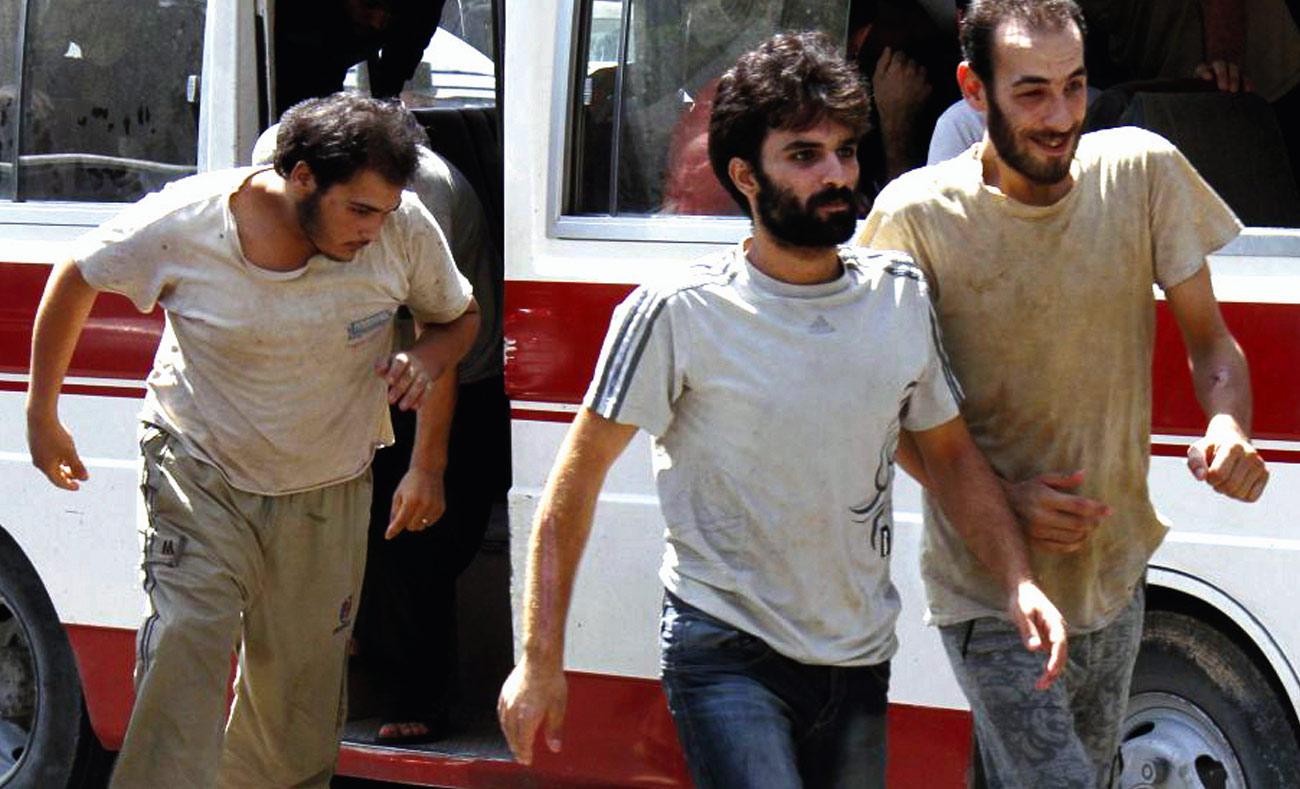
 Syrian detainees before their release by the Syrian regime - September 2012 (AP)
Syrian detainees before their release by the Syrian regime - September 2012 (AP)





 A
A
A
A
A
A

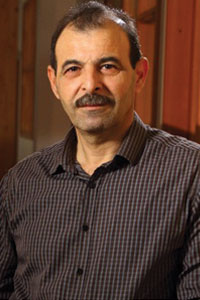
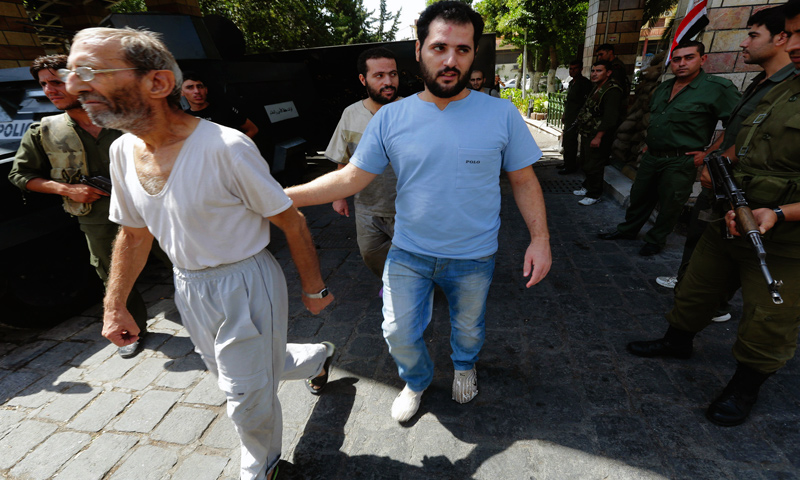
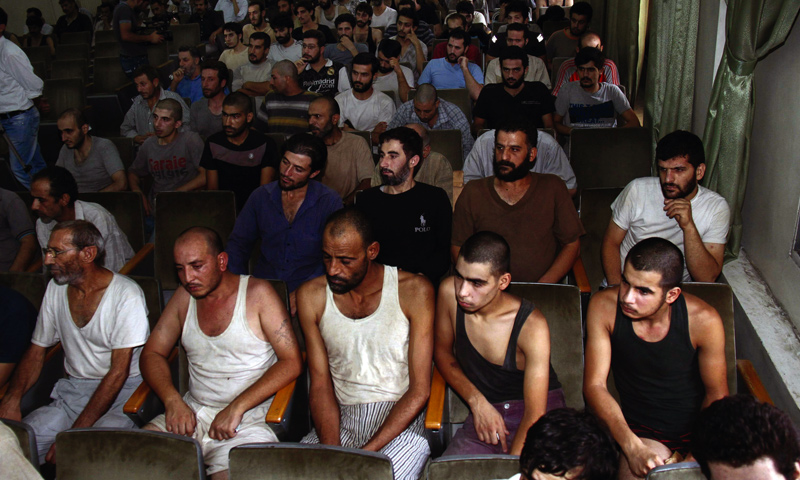
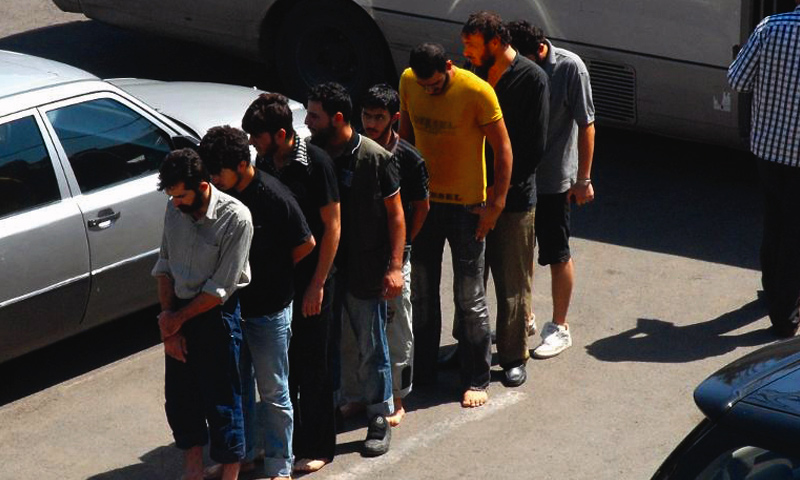
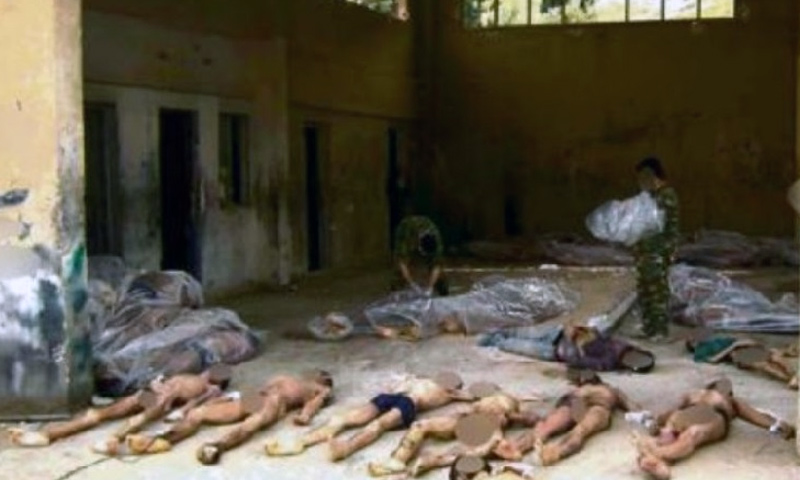



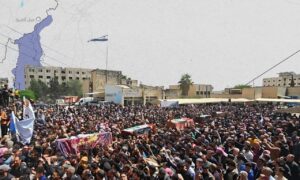



 More In-Depth
More In-Depth